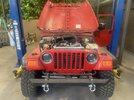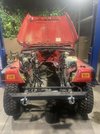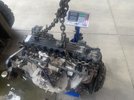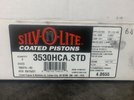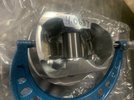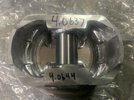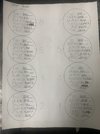Well, after WAY too long messing with things and learning a bit, I have the transfer case rebuilt and back together. Only slightly modified.
For a (not so) quick recap, as I may have mentioned it earlier, I purchased this "MP241" from a car dealership that purchased it to fix a Jeep they were selling, and ended up no needing it. I found a tag they put on it that fell off in the bed of my truck that simply said 2015 Jeep. So I assume this T-case came from a 2015 Jeep. It came with an internal splined input shaft which tells me it was from an automatic. The manuals use an external splined input shaft.
To work in my Jeep this T-case needed a few things. First it needed a 32 spline input shaft. Then an externally mounted VSS. Lastly a clocking ring. I quickly found out that an old school NP241 32 spline input shaft would not work. The two shafts are the same except the pilot bearing for the main shaft is two different sizes. The NP bearing measures 1.5xx" and the Jeep MP bearing measures 1.6xx". I found one video where a guy opens up the bore to fit the 1.6xx" bearing and was done. Local guys wanted a minimum of $200 for any lathe work. I discovered that Novak sells an input shaft that either just works, or they modify it to work. They couldn't tell me exactly. It sells for $200. I then spent a few hours on Rockauto crossing numbers and vehicles and came up with an input shaft for a NP261/NP263HD. It was $80 and free shipping from ebay. I purchased it. I knew it uses the narrower main bearing, which is common in 241's, but it also uses the larger pilot that I needed. I also purchased the narrower main bearing. When it all arrived I tried to install the main bearing in the jeep housing and quickly found it would not line up with the retaining ring built into the housing. I gave up and returned those parts and purchased the Novak shaft. When it arrived discovered it's the same shaft that I had ordered, but they turn down the shoulder that the main bearing rests against. This allows the wider Jeep/NP241 bearing to work, and still use the wider pilot bearing as well. DONE. I need a lathe bad. Would have saved me a month or so of headaches.
This picture shows the shoulder that was turned down to fit the wider main bearing on the input shaft. The bearing should be a tight slip fit. They did not turn it down enough for that. I spent about an hour with a file to finish "turning" it down. With the bearing installed in the housing I still had to tap the shaft into place with a hammer.

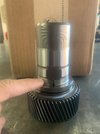
After that, the case went back together normally with new bearings and seals. The chain was in great shape so I reused it. Once the case was back together I turned my focus to the external VSS. Carl cut the tone ring I drew up. It fits on the weighted rear yoke. I drilled and tapped the yoke weight.
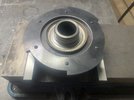
I temporarily put the yoke on the output shaft and was able to tap the tone ring into place to make it as centered as possible. Then I tightened all the bolts for the last time with a bit of blue locktite.
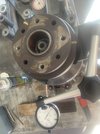
I then found that a piece of angle iron across two of the extra bolt holes on the back of the case worked great for mounting the sensor. It was a tight fit and took a bit of finesse to make it work, but turned out great. The far side bolt is a tight fit while the near side bolt hole is slightly elongated to allow adjustment of the sensor depth. I goes from .000" to about .050". I have the air gap set to .030" right now.
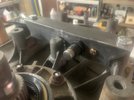
I then installed the clocking ring and a new plastic bushing in the shift lever. It's ready to go!
This week I'm working on all the small details and prep work for the engine build. I hope to do full build this weekend.

